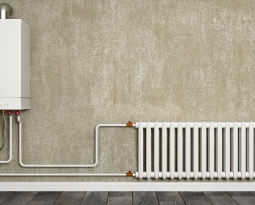The recent rise of Greta Thunberg and spate of XR protests across the globe have increased the visibility of global warming in mainstream discourse. Protecting the environment now seems to be at the forefront of everyone’s mind. In response, the future of Building Regulations looks to vastly improve sustainability measures and tighten energy targets.
The Government has already made radical changes to Part L of Building Regulations in the Future Homes Standard. Local Planning Authorities across the UK have declared climate emergency. This means they are looking for developers who go above and beyond current energy efficiency standards to consider future target emissions.
Air and ground source heat pumps have the potential to make compliance with Building Regulations more straightforward. Here’s a brief rundown on how they work and why developers have started considering them as viable heating systems.
How they work…
Heat naturally flows from higher to lower temperatures. Heat source pumps reverse this process by using a small amount of drive energy, such as electricity, in order to transfer heat from a natural source in the surrounding environment and into a dwelling or non-domestic development.
An air source heat pump (ASHP) is placed outside a property and kind of works like a fridge in reverse. It absorbs heat from the surrounding air and condenses it into a liquid. A compressor then increases the temperature of the newly formed liquid. As the temperature increases, the heat is transferred into the property’s heating circuits.
There are two types of ASHPs: air-to-heat and air-to-water. Air-to-water heat pumps take heat from outside air and feed it into a wet central heating system. Whereas air-to-heat pumps take heat from outside air and feed into the property through fans only. They require electricity to run, but are viable on the basis that they put out more electrical energy than they consume.
To install a ground source heat pump (GSHP), you generally need a lot of space and so they are better suited to properties with gardens. This is because GSHPs use a network of ground loops. A mixture of water and anti-freeze is pumped around the underground network of pipes and absorbs naturally occurring low temperature energy stored in the earth. The GSHP raises it to a higher temperature which is then circulated through a closed heating system.
For homeowners, the advantage of using a GSHP is that a constant temperature is available even throughout the colder months. Although they are already popular in countries like Canada, Sweden, Switzerland and the USA, GSHPs currently make up only 9% of heat pumps in the UK. ASHPs take the crown, representing 87% of all heat pumps in UK.
Why developers should consider using them
Getting your SAP calculations to pass can be a complex and multifaceted process – we feel your pain. The primary compliance target in Part L1a of building regulations is based on Carbon Emissions. Your SAP Calculations will only pass if your DER is lower than or equal to your TER.
The type of fuel you choose to provide heat to your development will greatly affect the CO2 emissions of the building. Although the Target Emissions in SAP are based on using mains gas, the efficiency of a heat source pump exceeds the increased CO2 emissions which are applied to the TER when they are used. The electrical energy put into a heat pump is usually a fraction of the heat energy returned. A typical ASHP is around 250-300% efficient. This means that for every 1kW of electrical energy used 25-30kW of heat energy is produced. Between 300 & 500%, the efficiency of GSHPs is even more impressive.
The DER usually becomes around half of the TER when you use a heat source pump. In other words, they can greatly help you achieve a pass in SAP!
There is a lot to consider if you are thinking about using heat source pumps. The team at Abbey Consultants is always happy to have a more in-depth conversation about air and ground source heat pumps and how they can help your development comply with Building Regulations.
Give us call on 01923 274 427 or email us at info@abbey-consultants.co.uk








